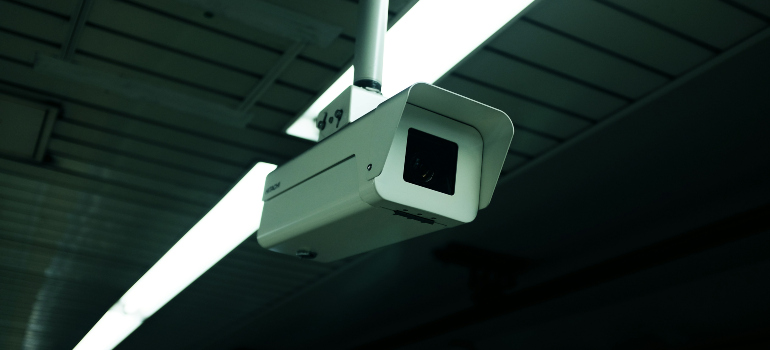Managing Security Risks During a Data Center Relocation
Get a QuoteManaging security risks during a data center relocation is crucial for protecting data integrity and confidentiality. Without proper measures, there is a heightened risk of data breaches and operational disruptions. This guide from Interstate Technology Logistics will help you understand and mitigate these risks.
Identifying Security Risks
During a data center relocation, your equipment faces several potential threats. One major risk is theft, where valuable hardware could be stolen during transit, leading to significant financial losses and potential data breaches. Additionally, physical damage to hardware is a significant concern. Equipment can be damaged due to rough handling, accidents, or inadequate packaging, resulting in costly repairs or data loss.
Data security risks are equally critical. Unauthorized access to sensitive information can occur during the move, posing a threat of data breaches. Hackers might exploit vulnerabilities during transit, leading to exposure of confidential data. Moreover, operational disruptions can arise, with potential downtime impacting business operations and compromising the integrity of systems if the relocation is not managed correctly.

Pre-Relocation Security Measures
To effectively manage these risks, thorough preparation is essential. Implementing pre-relocation security measures can help mitigate potential threats and ensure a smoother, safer transition.
Relocation Plan and Team Responsibilities
Develop a comprehensive relocation plan detailing every step of the move. Assign responsibilities to team members to ensure everyone knows their role in maintaining security. The plan should include timelines, checklists, and emergency contacts. Regularly review and update the plan as the relocation date approaches. Involve your IT and security teams from the beginning to ensure all aspects of the move are covered and risks are identified and mitigated early.
Hiring a Data Migration Company
Choose a data migration company with a proven track record in handling sensitive data and equipment. Verify their credentials and ask for references to ensure they have a history of successful data center relocations.
Reputable commercial movers in Springfield VA will provide special packaging, secure transport, and additional services to safeguard your equipment and data. Professional movers offer comprehensive insurance coverage to protect against potential losses or damages during transit. Additionally, look for companies that have certifications in data security standards, such as ISO 27001, to ensure they follow best practices. A reliable mover will also have contingency plans in place to handle any unexpected issues that may arise during the relocation process.
Securing Hardware
Secure hardware with tamper-evident seals to deter theft and ensure the integrity of your equipment. These seals provide a visual indication if any tampering has occurred during transit.
Implementing Strict Access Control Measures
Implement strict access control measures throughout the relocation process. Only authorized personnel should handle the relocation, and their access should be tightly controlled and monitored. Use identification badges and maintain a detailed log of all activities to track and prevent unauthorized access.
Protecting Data Integrity
Encrypt your data before the move. Encryption makes your data unreadable to unauthorized users. Use strong encryption standards and manage keys securely. Create multiple backups of your data and store them in secure locations. If anything goes wrong during the date center move, you can restore your data from these backups. Regularly test your backups to be sure that they can be restored successfully. Consider using both on-site and off-site backups for added security.
Encrypting Data
Encrypt your data before the move to make it unreadable to unauthorized users. Use strong encryption standards and manage keys securely. Encryption is a critical step in preventing data breaches during transit, ensuring that even if data is intercepted, it cannot be accessed without the proper decryption keys.
Using Firewalls and VPNs
Strengthen network security by using firewalls to block unauthorized access. Ensure your VPNs are active and secure to protect your data during transit. VPNs create a secure tunnel for data transfer, preventing interception by unauthorized parties.
Conducting Security Audits
Conduct a security audit before the move to identify and fix vulnerabilities. A thorough audit helps pinpoint weaknesses in your current security setup and allows you to address them before the relocation. Regularly update your security software and apply patches promptly to protect against newly discovered threats.
System Hardening
Harden your systems against attacks by updating all software to the latest versions and disabling unnecessary services and ports. System hardening reduces the attack surface, making it more difficult for hackers to exploit vulnerabilities. Implement intrusion detection systems (IDS) to monitor for suspicious activities. IDS can alert you to potential threats in real-time, allowing you to respond swiftly.
Monitoring and Surveillance
Set up real-time monitoring for the relocation process. Use surveillance cameras and tracking systems. This helps you keep an eye on your equipment and data throughout the move. Also, assign a team to monitor the process continuously. They should be ready to act if any issues arise.

Prepare an incident detection and response plan. Train your team to recognize and respond to security incidents. This way, you can act quickly if any security breach occurs during the move. Conduct regular drills to test the effectiveness of your response plan. Make sure everyone knows their role and responsibilities.
Operational Security Risks
Data center relocation can disrupt your services. Any downtime can negatively impact your business operations. The integrity of your systems might be compromised if the relocation isn’t handled correctly. Plan the move during off-peak hours and have a backup system in place to handle critical operations.
Post-Relocation Security
Once the relocation is complete, verify everything. Check your data for integrity and confirm all systems are operational. Conduct thorough testing to ensure there are no security issues. Test backup systems and restore procedures to confirm they work correctly. Document any issues and address them promptly. Update your security protocols to reflect any changes made during the move and ensure your team is aware of these updates. Regularly review and update security policies, staying informed on new threats and adapting strategies accordingly.

Incident response plan
Have an incident response plan ready, detailing steps to take in case of a security breach. Regularly review and update this plan to address new threats. Train your team on the latest security practices and show them how to use available tools and resources.
Successfully Managing Security Risks During a Data Center Relocation
Managing security risks during a data center relocation requires thorough preparation and vigilance. Following these guidelines allows you to protect your data’s integrity and confidentiality. More importantly, planning, communication, and continuous monitoring are all necessary for success. Involve your team in every step and provide regular updates. Test all systems before and after the move to catch any issues early. Proper documentation and checklists can prevent oversight and errors. With these measures in place, you can achieve a successful and secure data center move.
